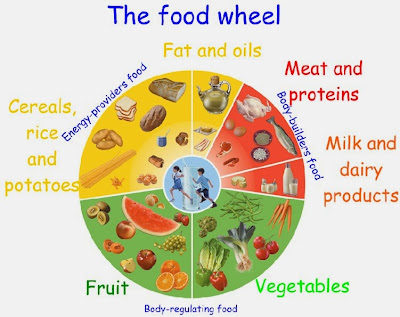SENSITIVITY
Through sensitivity, we respond to changes in the external environment.
Various organs and systems are involved in this example;
The
sense organs
Spanish Summary 2
NUTRITION
SONG
Watching this video we can know the main nutrients and their functions
video3
The lungs, trachea and bronchi are parts of it.
Our body needs oxygen for many processes such as digestion
video4

The circulatory system constantly moves blood inside
our body.
The heart pumps blood through blood vessels.
Arteries veins and capillaries are blood vessels.
video5
The kidneys filter the blood, eliminate waste and
produce urine. These are one part of the
the excretory system with the bladder.
EVALUATION NUTRITION CONTENTS
Through sensitivity, we respond to changes in the external environment.
Various organs and systems are involved in this example;
First,
the sense
organs capture
the information.
Second,
the brain receives
and interprets this information and decides how to act.
Third,
the muscles receive
orders from the brain, and they move the body.
External Coordination
External environment involves the sense organs, the nervous system and
the locomotor system:
The
sense organs obtain information from the external environment. Sense organs have
special cells that can detect stimuli
from the environment
Locomotor system
The locomotor system produces movement when the muscles and
bones work together.
The locomotor system is formed by the muscles and the bones.
The ends of bones are covered in cartilage. Cartilage is an elastic material.
Bones meet at joints.
Joints are held together by ligaments.
The muscles are joined to the
bones by tendons.
The
nervous system
The
nervous system is formed of nervous tissue.
This tissue is made up of one type of cell, neurons.
Neurons
Neurons are a type of cell with three parts:
The body, which
contains the nucleus and organelles.
Dendrites, branched structures. receive information from
the sense organs or from other neurons.
The axon, h
transmits information to other neurons and sends orders to organs.
There are two types of nervous system
A) The
central nervous system
The central
nervous system has two
parts: the brain and the spinal cord.
The brain is the
control centre of the body. It is the most important organ, and has three
parts:
– The cerebrum
controls
our voluntary actions and our emotions, and stores memory.
– The cerebellum
co-ordinates
movements and balance in our body.
– The brain
stem regulates
the organ activity.
The spinal
cord goes
from the brain to the bottom of the spine. The spinal cord is protected by the
spinal column.
B) The
peripheral nervous system
The peripheral
nervous system is
formed by the nerves. Nerves are found in every part of the body. Nerves carry
information.
There
are two types of nerves:
Sensory
nerves carry
information from the sense organs to the central nervous system.
Motor
nerves carry
orders from the central nervous system to the muscles and the organs.
Many
movements that we make are voluntary, such as writing. Others we do
involuntarily, without thinking. These are reflex movements.
Internal
co-ordination
Our internal environment is everything that we have inside of us, for example,
our blood, kidneys and digestive system.
Involuntary
muscles are not part of the locomotor system. They are part of many organs in
our body.
Involuntary muscles function independently from our will: we are not
conscious of them and we cannot control their function.
In many cases, we don’t
even know when they are moving.
The
endocrine system
The endocrine system is formed by organs called endocrine glands. These glands make chemicals called hormones.
Endocrine glands release hormones into the blood.
Hormones are substances that
act like messengers: they transmit orders
The
endocrine glands
These are four of the glands in the endocrine system:
The pituitary
gland,
which is found in the brain.
It
produces hormones that direct the activity of other endocrine glands. The pituitary gland also
produces the hormone that controls growth.
The thyroid gland,
which produces hormones like thyroxine that helps us make full use of nutrients.
The pancreas, which
produces insulin that regulates the amount of sugar circulating in our
blood.
The ovaries in
women and the testicles
in men,
which produce sex hormones that determine masculine and feminine sexual
characteristics.
SPANISH SUMMARY
Spanish Summary 2
NUTRITION
Nutrition includes all the processes that we carry out to obtain the building materials and energy that our bodies need
SONG
Watching this video we can know the main nutrients and their functions
Many body systems work for Nutrition Let's go to see them.
video 1
Digestion is the process that enables us to obtain nutrients from the food we eat.
The digestive system is a long tube that starts in the mouth and ends in the anus
Other organs are the stomach, the small intestine and
The digestive system is a long tube that starts in the mouth and ends in the anus
Other organs are the stomach, the small intestine and
the large intestine
The lungs, trachea and bronchi are parts of it.
Our body needs oxygen for many processes such as digestion
video4

The circulatory system constantly moves blood inside
our body.
The heart pumps blood through blood vessels.
Arteries veins and capillaries are blood vessels.
video5
The kidneys filter the blood, eliminate waste and
produce urine. These are one part of the
the excretory system with the bladder.
EVALUATION NUTRITION CONTENTS






